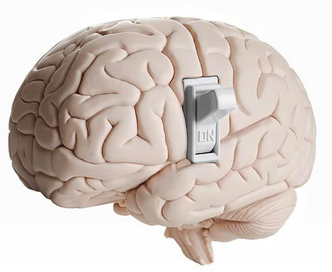2. Don’t believe it because it has a fancy website, scientific terms, or equations
The Internet is the one place where it’s easy to fall into digital rabbit holes. This happens when we’re enticed by a sparkling presentation of information we can’t ignore. As such, we must learn to cast a more discerning eye on what we consume online. “Too many of us are bamboozled by fancy terms, bold headlines, and testimonials. “Take a moment to look more carefully at the evidence being presented.”
3. Don’t reject a source that’s occasionally wrong
Everybody makes mistakes, even entities whose primary job is to report the facts. We shouldn’t take the occasional item of misinformation as a sign of unreliability. Instead, look at the bigger picture.
4. Check for plausibility
If bold and outrageous claims sound to good (or too bad) to be true, they probably are. It’s here that fact-checking comes into play, an essential part of Information Fluency.
5. Correlation does not equal Causation
Seemingly related events that occur or transform together doesn’t necessarily mean that one caused the other. “Ice-cream sales tend to increase during months when people are wearing short pants, but you wouldn’t want to conclude that eating ice cream causes people to wear shorts, or that wearing shorts causes people to eat ice cream”.
The deliberate use of correlations rather than measurable causations is a powerful tool for mis-information. Because of the seeming connectedness in factors many are influenced by this. Many also simply and quite mistakenly assume a correlation = the cause.
Know the difference between the two. They are important!
6. Check that the evidence supports the conclusion
Does the evidence of the claim actually lend weight to the overall conclusion? If not, it’s probably just big talk or padding of information. In such cases, find a way to discern pertinence from packaging. “Fast-talking, loose purveyors of information may flummox you with a whole bunch of data that aren’t related to the claim”. “Sometimes they do this intentionally; sometimes they don’t know that they’re doing it.”
7. Look for a “control condition”
A control condition refers to the group in an experiment that is opposite the treatment group. This is the group that doesn’t receive the application of whatever is being tested. In this way, the experiment has a baseline to use in determining if there is any change:
“A new pill claims to cure headaches within four hours … evidence reveals that people with headaches were given the pill and reported that their headaches got better. What we don’t know is how many headaches would have gotten better on their own … to know that, you’d need an experiment in which a control group of people, randomly selected, get no treatment and are compared with the treatment group.”
8. Is the claim based upon Modelling?
Models are not evidence, they are constructs that are very easily manipulated to demonstrate a desired outcome through the manipulation, the addition or exclusion of inputs.
Models can be constructed to present best case scenarios, worst case scenarios and every possibility in between. Worst case or extreme scenario models are great drivers of behaviour, so when models are presented in this light – Do your research!
9. Is the claim eliciting a fear response?
Emotions drive our thinking and decision-making to a far greater extent than we realise. Slick Marketers & Politicians know this and use this in their favour. If the claim is one that focuses on eliciting a fear-based, emotive response, be skeptical.
Fear, Uncertainty and Doubt (FUD) are great drivers of behaviour that by-passes critical thought.
10. Consider the Information Source.
Different information sources have become more politicised over time. Is the topic one that is politically charged? If so, seek out more diverse alternatives to the source to balance your thinking before making any form of judgement. Try to put aside your own political biases.


Comments
No comment yet.